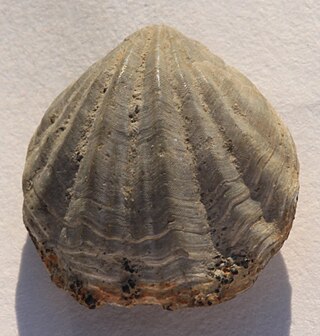The Sandy Hook Formation or Red Bank Formation is a geologic formation in New Jersey. It preserves fossils dating back to the Cretaceous period.[2]
Quick facts Type, Unit of ...
| Sandy Hook Formation |
|---|
|
 An Choristothyris plicata, lampshell, collected at Navesink Formation, near Poricy Brook, New York |
| Type | Geological formation |
|---|
| Unit of | Monmouth Group |
|---|
| Underlies | Tinton Formation |
|---|
| Overlies | Navesink Formation |
|---|
| Area | 100 miles (160 km) then an additional 100 fathoms (180 m) into the Atlantic Ocean[1] |
|---|
|
| Primary | Sand, quartz, massive, dark-gray, fossiliferous, feldspar, muscovite, chlorite, and biotite are minor sand constituents |
|---|
|
| Coordinates | 40.399429°N 73.976639°W / 40.399429; -73.976639 |
|---|
| Region | Atlantic coastal plain of the Coastal Province of North America |
|---|
| Country | United States |
|---|
| Extent | Monmouth County, New Jersey |
|---|
|
| Named for | Sandy Hook, New Jersey |
|---|
| Location | Sandy Hook, New Jersey |
|---|
| Coordinates | 40.4°N 74.0°W / 40.4; -74.0 |
|---|
| Approximate paleocoordinates | 40.6°N 49.5°W / 40.6; -49.5 |
|---|
| Region | New Jersey |
|---|
| Country | United States |
|---|
| Thickness at type section | up to 40 feet (10 m) |
|---|
Close

